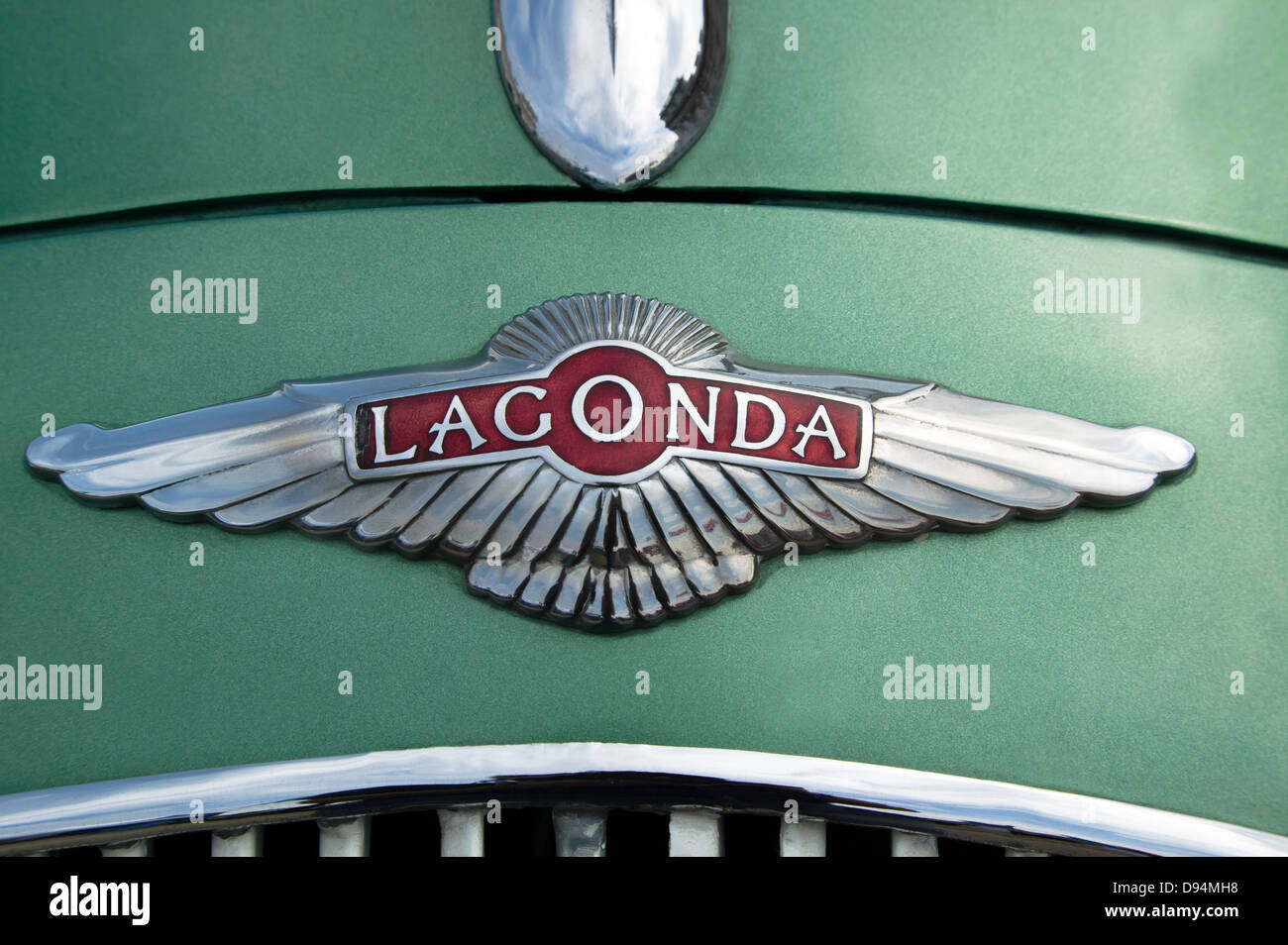Close-up of a bonnet badge on an Aston Martin 2.6 litre, 1948, Lagonda DropHead Coupe

Image details
Contributor:
John Gaffen / Alamy Stock PhotoImage ID:
D94MH8File size:
31.4 MB (1.2 MB Compressed download)Releases:
Model - no | Property - noDo I need a release?Dimensions:
4064 x 2704 px | 34.4 x 22.9 cm | 13.5 x 9 inches | 300dpiDate taken:
19 May 2013Location:
Old Royal Naval College, Greenwich.More information:
Close-up of a bonnet badge on an Aston Martin 2.6, 1948, Lagonda DropHead Coupe. The first new automobile produced by Lagonda after its purchase by David Brown in 1947 was the 2.6-Litre. It was named for the new high-tech straight-6 engine which debuted with the car. The so-called Lagonda Straight-6 engine was designed by Walter Owen Bentley and would propel Lagonda's new parent company, Aston Martin, to fame. The 2.6-Litre was a larger car than the Aston Martins and was available as either a 4-door closed car or from 1949 2-door drophead coupé, both with 4 seats. The drophead was bodied by Tickford, at the time not part of Aston Martin. A Mark II version appeared in 1952, in closed form only, with engine power increased to 125 bhp. The car sold reasonably well, in spite of being an expensive car and being launched so soon after the war, with 510 examples made when production ended in 1953. The car had a separate chassis and all independent suspension using coil springs at the front and torsion bars at the rear. At introduction it was believed to be the only all-independently sprung British car.[3] The Lockheed brakes had 12 in (305 mm) drums at the front and 11 in (279 mm) at the rear with the latter being mounted inboard. Rack and pinion steering was used. A drophead version tested by The Motor magazine in 1949 had a top speed of 90.2 mph (145.2 km/h) and could accelerate from 0-60 mph (97 km/h) in 17.6 seconds. A fuel consumption of 17 miles per imperial gallon (17 L/100 km; 14 mpg-US) was recorded. The test car cost £3, 420 including taxes.[2]